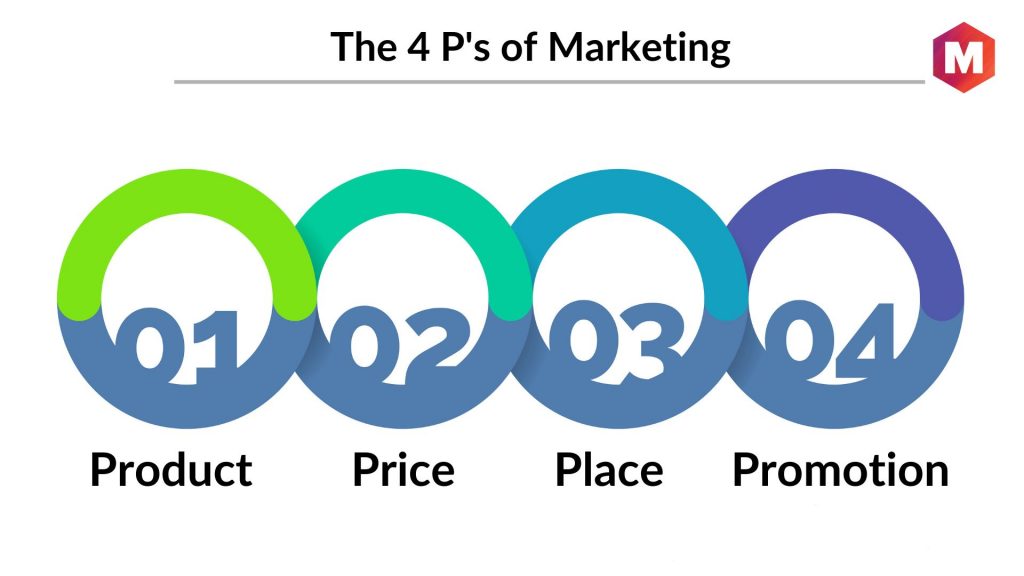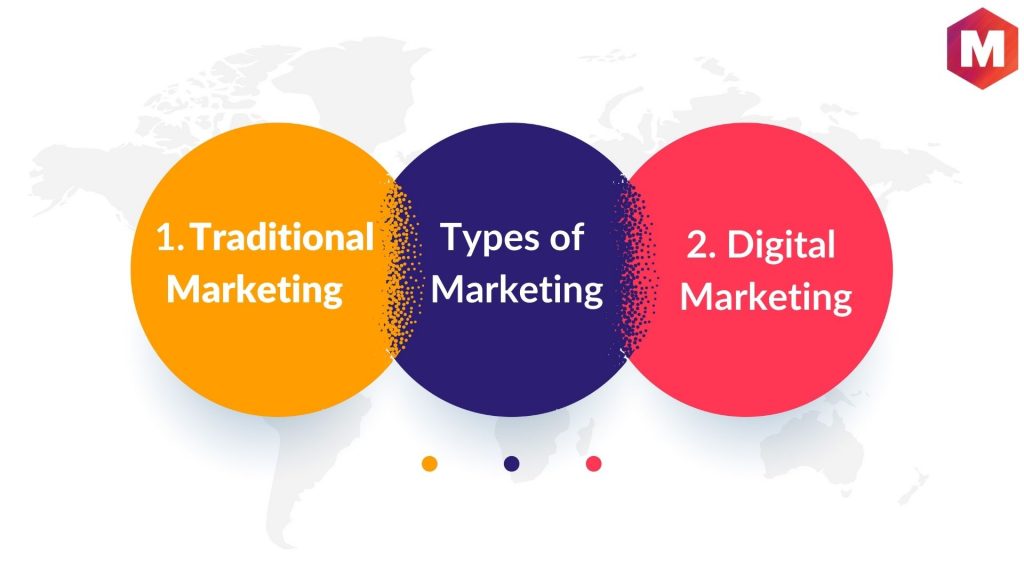Table of Contents
What Is Marketing?
Marketing is the strategic process of creating messaging that will attract an audience to a company’s product or services. In simpler terms, the point of marketing is to make more people want to buy your stuff and also to remind people that you exist.
From raising brand awareness and generating traffic to boosting traffic, building trust, and measuring results, marketing is an essential function for any business that wants to continue growing.
- Marketing is the process of creating value for a company through the creation, distribution, and promotion of products or services.
- Marketing includes the entire process from the initial market research to the final sales transaction.
- Marketing is also responsible for the customer relationship management of a company.
- The goal of a marketing strategy is to create demand for a company’s products or services and to build brand awareness. Any activities a firm undertakes to attract an audience to its product or services through high-quality messaging are referred to as marketing.
- Marketing refers to the long-term objective of demonstrating product value, optimizing brand presence, generating leads, increasing brand loyalty, and boosting conversions.
What are the 4 P’s of Marketing?
The marketing mix or the 4 Ps of Marketing refers to the following 4 Ps
1. Product
The first step in any marketing campaign is to assess what products or services you are trying to sell. What needs does it fill? How does it differ from similar products on the market? What are its unique selling points?
A product is a service or goods the company intends to distribute. The goal of the product should be to fill a gap in the market or meet consumer demand for a greater amount of an existing product.
Brands must first understand what type of product is being marketed, how it distinguishes itself from its competitors, whether it can be coupled with a secondary product or line, and whether there are comparable alternatives on the market before they can develop an effective campaign.
2. Price
After the product has been determined, the next step is to set a price. The price must be high enough to cover the cost of production while still being low enough to appeal to the target market.
To determine a fair price for your product, your marketing team will study competitor prices and use focus groups and surveys to find out how much your ideal customer is willing to pay.
If your price is too high, you’ll lose potential customers. But if your price is too low, you could end up losing money. It’s important to keep in mind that the price is not just the monetary amount that consumers exchange for the product but also the time, effort, and resources they expend to obtain it.
3. Place
Now that we have a product and a price, the next step is to determine where the product will be sold. This decision must take into account the target market, the competition, and the company’s distribution capabilities.
For example, if you’re selling a luxury product, you’ll want to sell it in high-end stores. But if you’re selling a mass-market product, you’ll want to sell it in supermarkets and other locations where consumers are already used to making purchases.
4. Promotion
The final step in the marketing process is promotion, which is how you will communicate your product to the world. Many different channels can be used for promotion, including advertising, public relations, social media, and even personal selling.
Your marketing team will need to determine which channels are most effective for your product and target market. They will also need to create messages that are clear, concise, and interesting enough to get people’s attention.
Marketing is an essential function for any business that wants to continue growing. By understanding the 4 P’s of marketing, you can create an effective campaign that will help you reach your goals.
Here is a video by Marketing91 on What is Marketing?
Types of Marketing
In general, there are 2 main types of marketing and Marketing can be classified into two different categories
- Traditional Marketing
- Digital Marketing
Let us delve a little deeper and understand each of these categories in detail-
1. Traditional Marketing
Traditional marketing refers to any type of marketing that is done offline. This includes marketing techniques such as print ads, direct mail, TV commercials, radio ads, and more.
Following are some of the types of traditional marketing-
- Outdoor marketing – Outdoor marketing includes any form of advertising that reaches consumers when they are outside of their homes. It includes techniques such as billboards, bus stop ads, flyers, and more.
- Print marketing – Print media marketing is a type of traditional marketing that uses printed materials to reach consumers. It includes techniques such as newspapers, magazines, direct mail, and more.
- Direct marketing – Direct marketing involves sending marketing messages directly to consumers. It can be done via mail, email, phone, or text message.
- Electronic marketing – Electronic marketing strategy uses electronic devices to reach consumers. It includes techniques such as TV commercials, radio ads, and more.
- Event marketing – Event marketing is a type of traditional marketing that involves hosting or attending events to promote a product or service. It can include trade shows, conventions, and more.
2. Digital Marketing
Digital marketing refers to any type of marketing that is done online. Internet marketing includes marketing strategies such as website ads, social media, and more.
Following are some of the types of online marketing, let us understand each of these marketing channels of an effective digital marketing strategy in detail-
- Search engine marketing – Search engine marketing involves using search engines to reach consumers. It includes techniques such as pay-per-click advertising, sponsored results, and more.
- Search engine optimization – Search engine optimization involves improving the visibility of a website in search engines. It includes techniques such as keyword research, link building, and more.
- Social media marketing – Social media marketing aims to use social media platforms to reach consumers. It includes techniques such as creating and sharing content, running ads, and more.
- Content marketing – The content marketing department of digital marketing involves creating and sharing content to reach consumers. It can include blog posts, videos, infographics, and more.
- Affiliate marketing – Affiliate marketing is a type of digital marketing that involves promoting products or services on behalf of another company. It can include using referral links, discounts, and more.
- Email marketing – Email marketing involves using email to reach consumers, generate leads and optimize favorable outcomes for a sales strategy. It can include sending newsletters, promotional offers, and more.
- Native advertising – Native advertising is a type of digital marketing that involves using native ads to reach consumers. Native ads are those that are similar in format to the content they are appearing in.
- Display advertising – Display advertising is effective in using display ads to reach consumers, promote a product, service or brand and boost conversions. Display ads are those that appear on websites, apps, and more.
- Video Marketing – Video marketing is a type of digital marketing that involves using videos to optimize presence, engage audiences and increase sales. It can include creating and sharing videos, running ads, and more.
In addition to these, some of the other marketing types that are quite popular are-
- Inbound Marketing – Inbound marketing is a type of marketing that focuses on attracting customers to a business through various means. It includes techniques such as SEO, content marketing, and more.
- Outbound Marketing – Outbound marketing is a type of marketing that involves reaching out to customers using different mediums. It includes techniques such as advertising, cold calling, and more.
- Guerrilla Marketing – Guerrilla marketing is a type of marketing that uses unconventional methods to reach the target audience. It can include street performances, flash mobs, and more.
- Relationship Marketing – Relationship marketing is a type of marketing that focuses on building and maintaining relationships with customers. It can include loyalty programs, customer service, and more.
- Word of Mouth Marketing – Word of mouth marketing is a type of marketing that uses the power of word of mouth to reach consumers. It can include using social media, referrals, and more. Effective word-of-mouth marketing strategy is the backbone of viral marketing campaigns.
Benefits of Marketing
Marketing is an important aspect of any business and many benefits come with it. Some of the benefits of marketing are-
- Promotes a product or service – One of the main objectives of marketing is to promote a product or service. Through various marketing techniques, businesses can reach a larger audience and create awareness about their product or service.
- Generates leads and audiences – Another benefit of marketing is that it helps to generate leads. By using various marketing techniques, businesses can attract potential customers and convert them into leads.
- Builds relationships – Marketing also helps to build relationships with customers. With the help of relationship marketing, businesses can create a loyal customer base.
- Creates brand awareness – Another benefit of marketing is that it helps to create brand awareness. By using an effective marketing plan, businesses can reach a larger audience and create awareness of their brand.
- Helps in decision making – Marketing also helps businesses to make better decisions. By using marketing research, businesses can gather data and information about their target market. This data can then be used to make informed decisions about the product or service.
- Increases sales and revenue – One of the main objectives of marketing is to increase sales and revenue. Via different marketing techniques, businesses can reach a larger audience and generate more sales.
- Helps in business growth – Marketing also helps businesses to grow. With the help of relevant marketing techniques, businesses can reach a larger audience and create awareness about their product or service. This can lead to increased sales and revenue, which can help businesses to grow.
- Enhances brand image – Another benefit of marketing is that it helps to enhance the brand image. Through marketing, businesses can create a positive image in front of prospective customers.
- Helps in competition – Marketing also helps businesses to compete in the market. Businesses can reach a larger audience and create awareness about their product or service through effective marketing management. This can help them to compete with other businesses in the market.
- Helps in Expansion – Marketing also helps businesses to expand. Businesses that use effective marketing strategy optimize their process of selling products and services and expand their market presence and business.
Limitations of Marketing
Marketing is an important aspect of any business but it also has some limitations. Some of the limitations of marketing are-
- Time-consuming – One of the limitations of marketing is that it can be time-consuming. Marketing requires planning and execution, which can take up a lot of time.
- Costly – Another limitation of marketing is that it can be costly. Marketing requires money to create and implement marketing campaigns.
- Requires manpower – Marketing also requires manpower. Marketing campaigns need to be designed and executed by people.
- No guaranteed success – One of the limitations of marketing is that there is no guaranteed success. Marketing campaigns may not always be successful and may not generate the desired results.
- May create a negative image – Another limitation of marketing is that it may create a negative image. If a marketing campaign is not well executed, it may create a negative image of the brand.
- Oversaturation – So many companies are now using marketing that it has become oversaturated. This means that there is a lot of competition and it is difficult to stand out from the crowd.
- May create unrealistic expectations – Marketing may also create unrealistic expectations. If a product or service is heavily marketed, people may have unrealistic expectations about it.
Purpose of Marketing
The purpose of marketing is to create and maintain customer relationships. Marketing is the process of creating value for a company through the creation and maintenance of customer relationships. Marketing is used to identify, attract, retain, and grow customers.
The ultimate goal of marketing is to generate sales. However, marketing goes beyond just generating sales. Marketing also helps businesses to build relationships with customers. Marketing is used to create and maintain customer relationships. The goal of marketing is to create value for a company through the creation and maintenance of customer relationships.
All in all, marketing helps businesses to achieve their business objectives.
Are Marketing and Advertising Similar or Different?
The terms “marketing” and “advertising” are often used interchangeably, but they are two different concepts. Advertising is just one component of marketing. It is a paid form of communication that is used to promote a product, service, or brand.
Marketing, on the other hand, is a broader concept that includes all of the activities that a company does to promote its product or service. Marketing includes activities such as market research, product development, advertising, and sales.
So, while advertising is a part of marketing, it is not the only thing that marketing includes. Marketing is a much broader concept that encompasses all of the activities that a company does to promote its product or service.
Qualities needed for Marketing
Certain qualities are needed for marketing. Some of the qualities that are needed for marketing are-
- Good communication skills – One of the qualities that are needed for marketing is good communication skills. Marketing involves communicating with customers and so, good communication skills are needed.
- Forward-looking – Another quality that is needed for marketing is to be forward-looking. Marketing requires looking at the trends and planning accordingly.
- Strategic thinking – Strategic thinking is another quality that defines marketing effectiveness for a brand. Marketing requires planning and so, strategic thinking is needed.
- Analytical skills – Analytical skills are also needed for accomplishing marketing objectives. Marketing requires analyzing data and so, analytical skills are needed.
- Creative thinking – Creative thinking is another quality that is needed for marketing. Marketing requires coming up with new and innovative ideas and so, creative thinking is needed.
- Consumer-centric – A quality that is needed for strengthening brand loyalty is to be consumer-centric. Marketing is all about the customer and so, a marketing professional needs to be focused on the customer.
Why does Marketing91 Focus on Marketing?
Marketing is a skill and it should be known to all, especially to people who want to grow their business. So that’s why marketing91 focuses on marketing.
Marketing91 is a website that provides marketing information, resources, and tips. The website covers all aspects of marketing, from conducting market research to sales and business strategy to measuring results. The website is a valuable resource for marketing professionals and businesses alike.
Liked this post? Check out the complete series on Marketing



i think that marketing’s definition should be added with something more,
Actually Marketing is about finding the gap between the existing product and the consumer needs and filling that gap,and gap filling is supported by 4 P’s and other marketing essentials.
What is marketing management